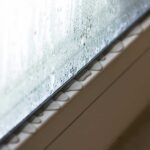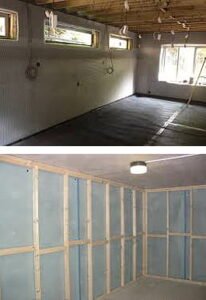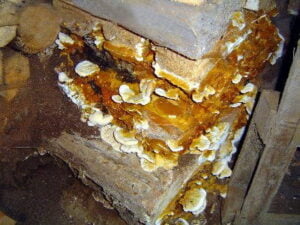Discovering you have damp in your property can be quite a worrying situation, as it can cause not only structural problems within the property itself if not adequately treated, but in some cases it can actually become hazardous to the health of you and your loved ones.
The three most common forms of damp are rising damp, penetrating damp and condensation. Each type has its own set of symptoms and requires its own unique treatment plan in order to eradicate it and, where possible, prevent further occurrences of the condition. This article will discuss each type of damp in turn, describing in detail the cause, symptoms and treatment in each case.
Rising Damp
Cause:
Rising damp is caused when ground water on the exterior of a building moves up the wall by a capillary action, penetrating through to the inner surface of the wall. This is particularly common in older buildings which may have an inadequate or failed damp proofing course in place.
Symptoms:
Usually seen in ground level rooms and basements. Can be identified by tide marks on the walls, and discolouration of wallpaper. Wall may feel wet to the touch. Plaster may start to bubble and flake. May cause skirting boards and wooden flooring to develop rot.
Treatment:
The best course of action if you suspect rising damp in your property is to contact a damp proofing expert for an opinion. They will usually conduct a thorough survey of the property to identify the cause of the issue and its best treatment plan, as each case is different. Installation of a new damp proofing course and renewal of the affected plaster is sometimes adequate, however there are alternative treatments available such as electo-osmosis and membrane systems.
Penetrating Damp
Cause:
This form of damp is usually a result of leaking pipes or faulty guttering, leading to large amounts of water on the exterior of the wall which penetrates through to the interior of the property.
Symptoms:
Penetrating Damp can affect walls, ceilings and floors in any part of a property. Usually presents as damp patches on the wall itself, which may get worse when it rains. Tide marks on wallpaper and salt deposits are also common symptoms of penetrating damp. Failed plaster can also be due to penetrating damp, as well as wet or rotting woodwork in the vicinity.
Treatment:
Treatment of penetrating damp will generally depend upon how early it is identified and the level of damage it has caused. Fixing the root of the problem to prevent water penetrating the wall is usually the most prudent solution, as well as renewing the interior plaster/woodwork where required. If damp has affected structural parts of the building then more work may be required, including dry/wet rot treatments. It is always best to get the opinion of an expert before proceeding with any work, as they can best advise you as to the best course of action.
Condensation
Cause:
Condensation is caused by a range of factors including lack of heating, ventilation and insulation. Too much moisture in the air can lead to it building up on other surfaces, which over time can lead to the growth of mould, which in turn can cause health implications to those living in the property.
Symptoms:
Excessive water forming on walls, ceilings and windows leading to the development of mould growth is the most common way to identify that you may have a condensation problem in your home. Mould on other surfaces such as carpets and wallpaper may indicate that the issue may be severe and will require immediate action to prevent further damage.
Treatment:
Ensuring you have adequate ventilation, heating and insulation in your property is the key to controlling condensation. Excess water in the air can also be controlled using a humidifier in some cases. Humidifiers remove water particles from the air and help to reduce condensation. Ensuring rooms, particularly kitchens and bathrooms, are well ventilated when in use can also go a long way to prevent condensation occurring.
In summary, when in doubt, contact a reputable expert in the damp proofing industry. They will be able to diagnose the problem for you, ensuring your property gets the correct treatment to eradicate the problem. Don’t let damp ruin your home, take action today!








